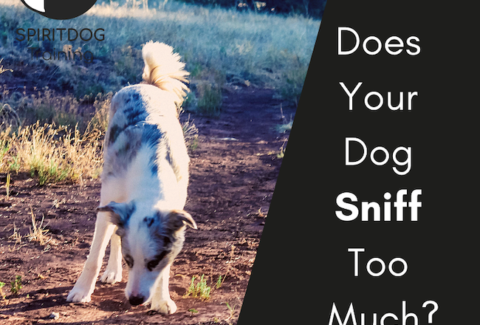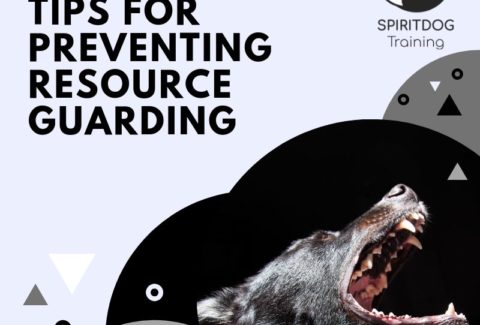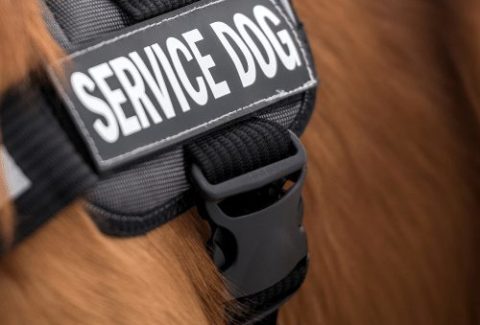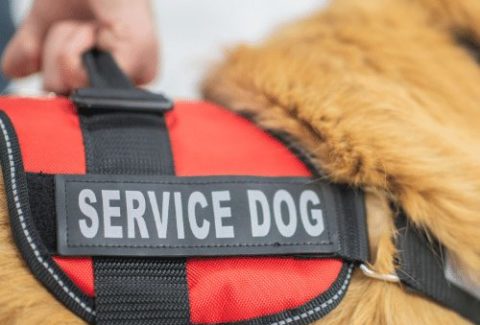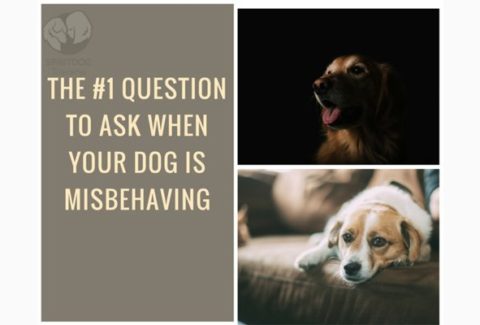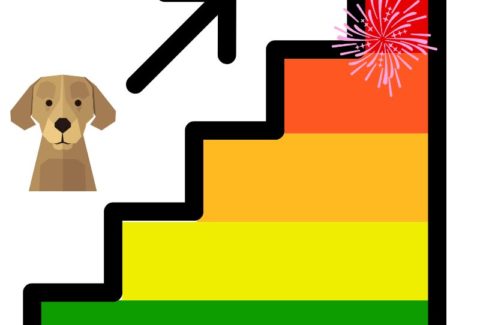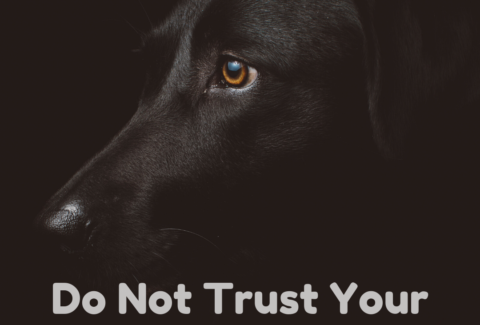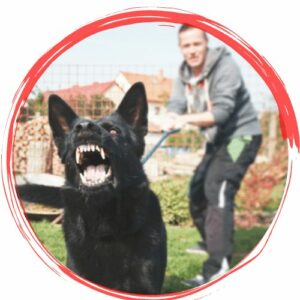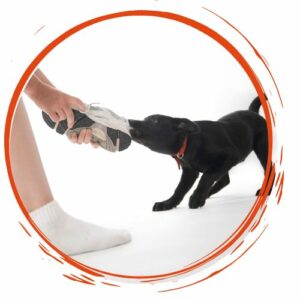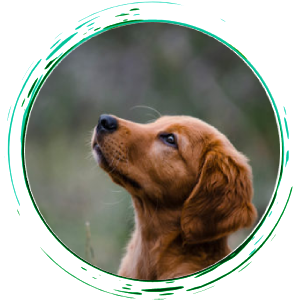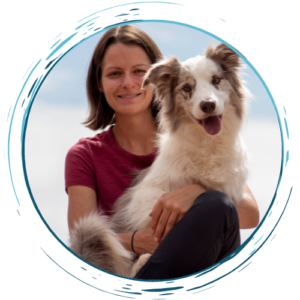7 Deadly Sins in Training Reactive Dogs
November 17, 2020 2021-05-24 18:267 Deadly Sins in Training Reactive Dogs
7 Deadly Sins in Training Reactive Dogs

Thank you to Emily Abrahams for the wonderful pictures – check out her website and Instagram.
Out of all the training I provide – online and in-person – no topic receives as much demand and attention as reactivity. Every day when I log on to answer online students’ questions I can already guarantee that there will be some about reactivity, when I did a poll on Facebook yesterday about what owners want to learn most about it again was – dealing with reactive dogs.
The good news is that usually, once you have the right approach you can make a big difference in your reactive dog’s behavior. While not every dog can and will be a social butterfly, we can make every dog happier, more relaxed and the owner more confident in handling their dog.
For this however, it is important that you stay far away from some habits that will further increase your dog’s reactivity rather than solve it. And that can happen faster than you’d think!
Here are the 7 deadly sins in training reactive dogs:
#1 Thinking It Will Go Away By Itself
There are a few doggy habits and behaviors that will probably resolve over time even if we do not do anything in particular – for example young puppies’ tendencies to sit down and stop moving in the middle of a walk when they are tired.
Reactivity is not one of these behaviors.
Reactivity is a self-sustaining behavior, meaning that every time your dog has a reactive episode in which he crosses his threshold he does not only relive his negative conditioned emotional response, but that response is actually likely to get stronger.
This is because evolution has made our and our dogs’ brains really good at remembering negative/stressful/anxiety-provoking events. Your dog will not just forget from one day to the next what made him feel scared and stressed. Rather, every time he goes through these negative emotions he will be more likely to show reactivity in the future.
Closely connected to this point is the next:
#2 Trying To Balance Bad And Good Experiences
Again, dogs and humans (and all other animals as well) are experts at remembering the worst of any experience.
Don’t believe it? Thinking you are one to always see the bright side?
Imagine that this afternoon you have a nice cup of coffee with a friend, and while you drive home there is a lovely sunset. When you are nearly home, you get rear-ended. The driver of the other car is rude and appears to not have insurance. That would probably retroactively ruin the whole afternoon, right?
The same concept applies to your reactive dog. You cannot expose him to situations that push him over his threshold repeatedly and assume these situations are automatically “canceled out” by having some good times in between. Your dog is going to remember “being rear-ended” much more than how nice the flowers smelled.

In order to tackle his reactivity, you need to be proactive in creating situations that your dog can handle. This bring us to the next big mistake:
#3 Not Planning Ahead
If you have a reactive dog and you want him to get better, you will need to change how you do things for a while. There is no way around that. You need to know which triggers set your dog off, and you need to make a conscious effort to avoid these as much as possible, or deliberately set up training situations in which you tackle them.
In my reactive dog online class, we have discussions on this topic every week. For some owners and their dogs planning ahead means not walking during the times of the day when they know their neighbors will be walking their dog. For dogs that are reactive towards loud traffic noises it means putting the dog into a room at the back of the house with a frozen Kong and some music when they know the garbage truck is about to come. For dogs that are reactive to people it could mean avoiding places that are crowded on weekends and sunny days, and so on.
Of course, part of the training process will be exposing your dog to his triggers in a slow and thoughtful way. But you should never do this without … regulating trigger intensity. Our next deadly sin.
#4 Not Regulating Trigger Intensity
Triggers are not binary. There is never just “yes trigger” and “no trigger“. Triggers are a fluid concept and if we are aware of this, we can very smartly regulate the trigger intensity to make training much more effective.
Every dog has his own specific “heat map” of trigger intensity. We can use this to our advantage and modulate how intense these triggers are.
There are two distinct types of triggers: visual and auditory. Of course, they often go together – a dog-reactive dog for example will react to both the visual and the auditory stimuli of seeing and hearing another dog.
In general, you can decrease the intensity of a visual trigger by increasing the dog’s distance to it (sometimes this needs to become a very large distance – some of my clients start out across an empty lot with 300 ft between them and another dog).
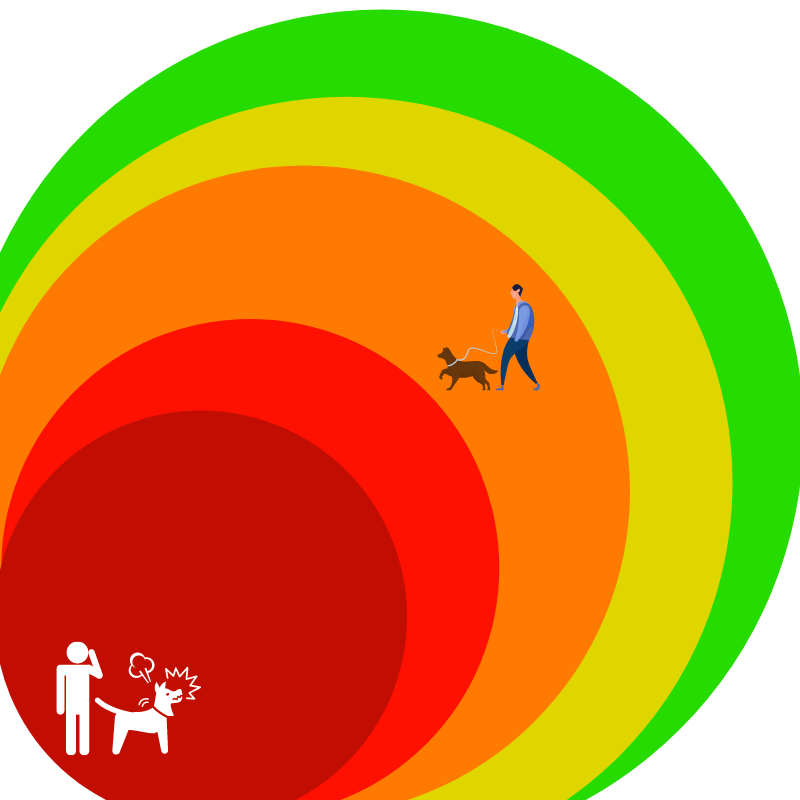
You can decrease the intensity of an auditory trigger by decreasing its volume.
In many cases this will mean recording the sound that’s causing your dog to be reactive and using a very low-volume recording. In our case of the dog reactive towards the sound of the garbage truck for example, you could record the truck’s sound on your phone (or even just look for a YouTube recording) and play it to your dog at the lowest possible volume first, only gradually advancing in intensity.
As you do so, don’t squish your own progress by making this next mistake of:
#5 Not Being Consistent In Your Training
Reactivity doesn’t take breaks.
In fact, your dog is much more likely to revert to old and ingrained behaviors the longer you skip training sessions. If you train once every two weeks, I can already tell you that you probably will not be able to make a big difference in your dog’s behavior (or actually, any difference at all).
In order to change ingrained conditioned emotional responses, you need consistent and well-planned training sessions. Most dogs do best if they train for about 10 minutes every second day.
The typical mistake I see is that of an initially highly motivated owner who starts out with training every day or even several times a day, but then the frequency of training drastically decreases after a week or two, until the dog doesn’t get trained at all anymore a month in.
Don’t make that mistake! Don’t burn yourself out too quickly by going crazy in the first week – if you have a reactive dog, you will probably be in this for the long run.
Addressing reactivity is a marathon, not a sprint.
Set yourself realistic goals for training frequency and stick to them long-term.
#6 Not Letting The Dog Move
Dogs have an amazing library of built-in ways to calm themselves down. All of these ways need the dogs to move in some way. Dogs sniff, dogs wander in circles, they mark a bush, they scratch, they stretch … and we should let them do that.
You know what a reactive dog close to his threshold nearly never does to calm himself? Sit down while staring straight a his trigger.
Don’t make your dog do that.
In our reactivity online class, one of the first things owners learn is how to utilize a long leash and sniffing to help their dog tap into his potential to calm himself down. Our dogs already instinctively know how to do that – but we need to let them! If you hold your leash so tight that your dog’s front feet barely reach the ground, he is not able to utilize any of his calming signals to calm himself down and signal that he does not want any escalation to other dogs or people.
Of course, last but not least – you should never ever even think about:
#7 Punishing Reactivity
The reasons why you should refrain from this are manyfold and too much to explain in a single blog post, so I will focus on the most important one:
The trainer (the owner) has ideas about what the trainee (the dog) learns.
But what the trainee actually learns is ultimately out of our control.
We can have the best intentions and the smartest ideas and smoothest reasoning about why a specific training approach should work this or that way. But what connections the dog ultimately forms is not just dependent on our ideas – it is determined by timing (something many trainers get wrong) and even factors completely outside of our control (such as for example the triggering dog lunging at ours!).
If you intend to discourage your dog from his reactive response through punishment, chances are that he will associate the verbal or physical reprimands not with his reactions but with the trigger.
“Every time I see another dog, my owners gets so mad and unpredictable. I just hate to see other dogs!”, is a very unfortunate connection that many dogs form very quickly when punishment is used.
Again, there is nothing you can do to perfectly guarantee that your dog will link the punishment to his actions (in fact – because he is mainly reacting on a classical than an operant conditioning basis – he won’t, but this is too much to pack into this blog post!).
Do you really want to risk making the reactivity worse by using corrections? I can tell you that I have met many, many clients whose dogs started out with mild reactivity and they tried to self-treat by utilizing corrections (choke collars being the most popular choice) and very quickly the reactivity was not so mild at all anymore …
Calm Your Dog, Plan Your Sessions, Stick To The Schedule, Advance At Your Dog’s Pace
Reactivity can get better.
If you address it smartly, your dog’s behavior can improve a lot.
If you need guidance and a step-by-step process, join us in our lifetime-access reactivity online class here:

